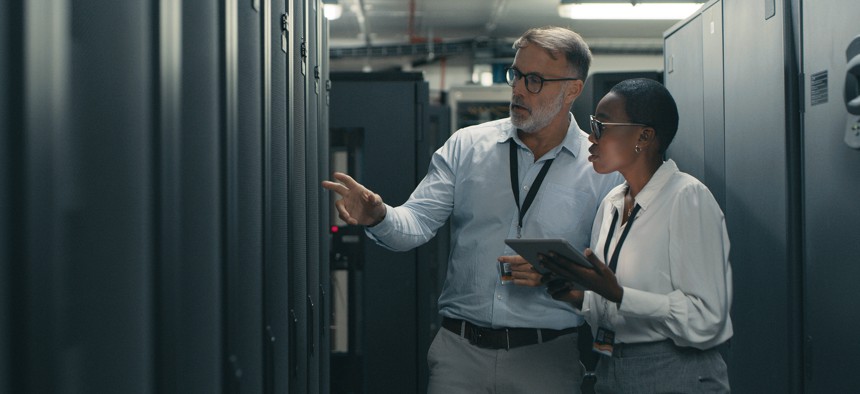Mayor launches IT modernization to boost services delivery

Marco VDM / Getty Images
Chicago’s new IT modernization initiative aims to improve operations and deliver more accessible and equitable city services.
Chicago is modernizing its IT infrastructure to improve resident services delivery, protect residents’ privacy and security and increase equity.
To address challenges caused by paper-intensive systems, fragmented data and outdated technology, the city launched an Information Technology Modernization initiative, according to a June 23 announcement. IT MOD covers a variety of activities including re-engineering business processes, replacing aging computer systems, improving data integrity, boosting transparency, reducing the IT burden on city departments and refreshing job titles.
IT MOD will feature an innovation and solutions hub where city officials and various stakeholders can collaborate on rapid prototyping and solution implementation. Employees and residents can also submit ideas to the hub.
By making public services more digitally accessible and easier to use, Chicago expects to lower the cost of receiving city services and benefits.
The announcement also supports Mayor Lori Lightfoot’s broader strategy to close Chicago’s digital divide. “In addition to enhancing city services, the new approach will contribute to a more equitable Chicago and build on the Mayor’s launch of Chicago Connected, a groundbreaking initiative that provides free high-speed internet access to 100,000 Chicago students and their households for four years,” officials said.
Chicago’s 2021 IT Strategic Plan issued last June previewed many of the goals of the IT MOD initiative, including leveraging data to spur innovation, transforming the city's IT infrastructure by modernizing applications and supporting technologies and strengthening IT integration and security. It also called for making public services digitally accessible and more user friendly and enabling equitable access to and use of city services through technology.
The city had already made several modernization moves by the time that plan was issued. To improve transparency, it published over 700 datasets on its open data portal. The city also migrated its call center and mobile device management from legacy, on-premise systems to cloud-based platforms and had been modernizing business applications.
However, 61% of the city’s applications were relying on aging or unsustainable technologies, with several mission-critical systems at the end of their life cycle, the 2021 strategic plan said. Maintaining the outdated systems introduces operational risk and is expensive, diverting funds that could be spent innovating resident-facing services.
Modernization would allow the city to do more with less, the plan stated. Among the benefits would be optimizing core IT management processes, improving data-sharing across departments and reducing risks related to aging systems. It would also help expand technology-related opportunities for city staff and better leverage contractor resources.
The cost of modernization, which the 2021 plan estimated at an additional $350 million to $400 million over approximately eight years, could “be reduced and offset by reinvesting the savings from modernization back into City operations,” the document stated.
“Chicago can offset the IT modernization spend and free up funding for the necessary IT Workforce positions by taking a ‘whole of government’ approach. This includes application rationalization, organizational changes, better leveraged use of partners, process improvements and change management, and increased efficiencies through data-sharing and effective use of emerging technology innovations,” the plan stated.
“By providing equitable access to better technological resources, we can empower our residents — giving them the tools they need to access opportunities, resources, and so much more,” Lightfoot said of the MOD IT initiative. “This new technology approach will help ensure that moving forward, city government uses technological resources in a way that benefits all and not just some.”






